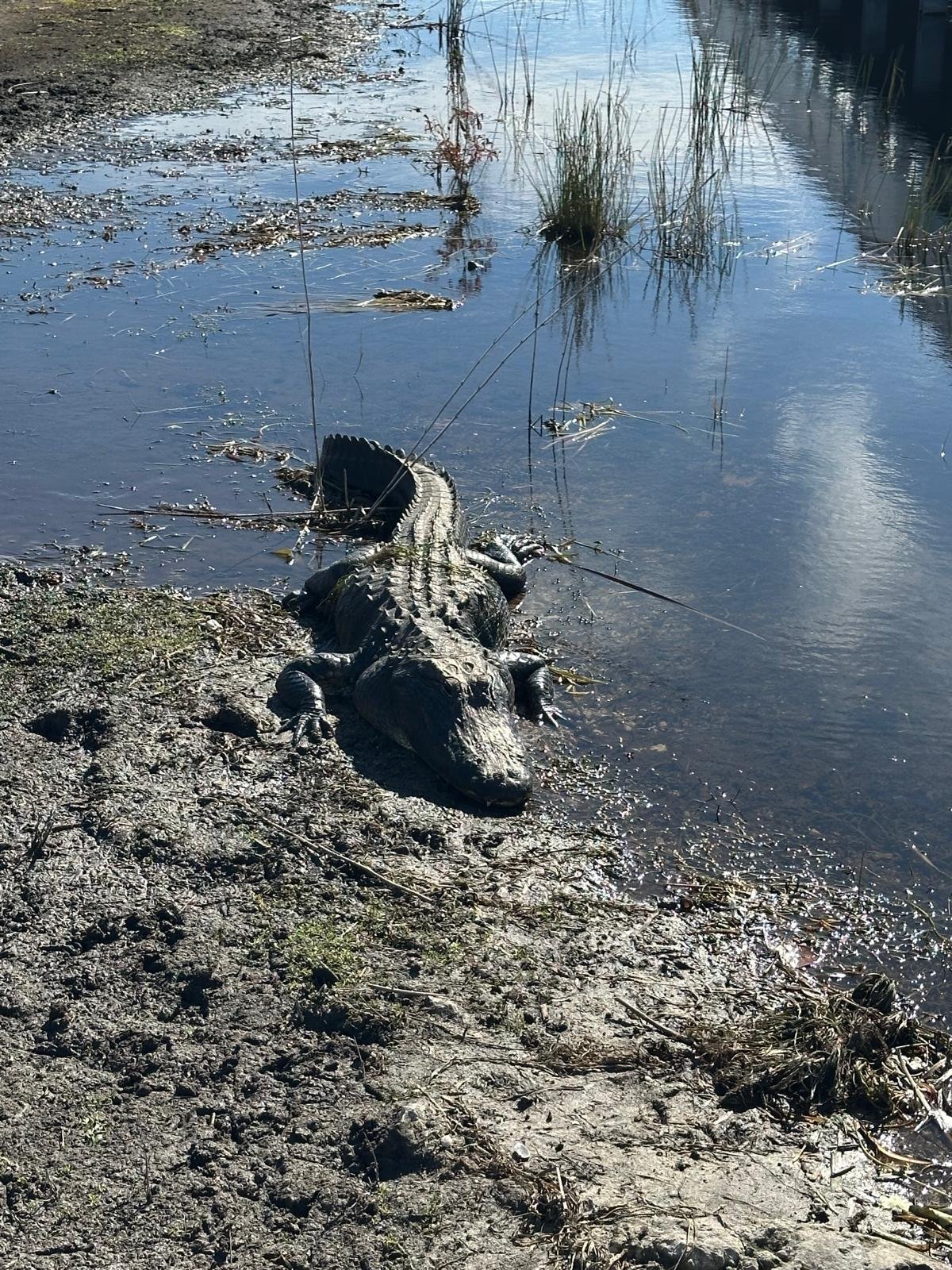
American Alligator
The American Alligator: Conservation, Behavior, and Future Outlook
The American alligator, is an intriguing and robust species native to the southeastern United States. Inhabitants of freshwater environments, such as swamps, marshes, rivers, and lakes, their range spans from North Carolina to Texas, with the highest concentrations in Florida and Louisiana. These states have several million people, while Louisiana has an estimated two million alligators, and Florida has approximately 1.3 million. Their populations are very healthy over their range and are considered a true conservation success story due to successful protection and management efforts.
Conservation Success Story
The American alligator is usually considered a success story for wildlife conservation. By the middle of the 20th century, due to overhunting and loss of habitat, the species was on the verge of extinction. The alligator was listed as endangered under the precursor to the Endangered Species Act in 1967. The dramatic recovery was possible due to conservation measures involving restrictions in hunting, protection of habitats, and captive breeding programs. In 1987, it was removed from the endangered list-a testament to coordinated conservation efforts at the state and federal levels. Today, it is classified as "least concern" by the International Union for Conservation of Nature.
Other conservation efforts still involve management programs that balance human-alligator interactions. Regulated hunting in states like Louisiana helps to maintain stable populations and provides funds for habitat protection. Public education campaigns also help in minimizing conflicts between humans and alligators, particularly in areas of rapid urbanization.
Behavior and Ecology
American alligators are apex predators and essential in their ecosystems. They have an opportunistic diet that includes fish, birds, amphibians, and small mammals. Juveniles feed on insects and crustaceans. Adults, which grow to 15 feet and more than 1,000 pounds, manage the health of aquatic ecosystems through control of prey populations and provide "alligator holes" as water during dry periods for other species.
Socially, alligators are relatively solitary but exhibit complex behaviors during the breeding season. Courtship involves vocalizations, water displays, and physical interactions. Females build nests from vegetation and soil to incubate their eggs, which hatch after about 65 days. Remarkably, mothers guard their nests and assist hatchlings in reaching the water, demonstrating a level of parental care uncommon among reptiles.
Generally, alligators are shy and avoid human contact; however, they can become dangerous if habituated to human-provided food. This emphasizes the need for respect for wildlife and maintenance of natural behaviors in wild populations.
Future of the Species
The future for American alligators seems secure, yet there are still challenges. One huge threat is habitat loss, either through urbanization. Rising sea levels with saltwater intrusion would possibly affect freshwater habitats, while increased human development close to wetlands increases potential conflict between humans and alligators. Also, invasions by other species, such as the Burmese python of Florida, may disrupt alligator ecologies.
Conservation programs will have to evolve to meet these new and emerging threats if the species is to continue to thrive. Wetland protection, sustainable management, and coexistence with wildlife will be key in the future.
In the final analysis, the recovery of the American alligator is a true conservation success story. With continued effort, this ancient reptile will continue to thrive and remain an enduring symbol of resilience, playing a vital role in southeastern ecosystems.

